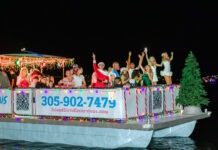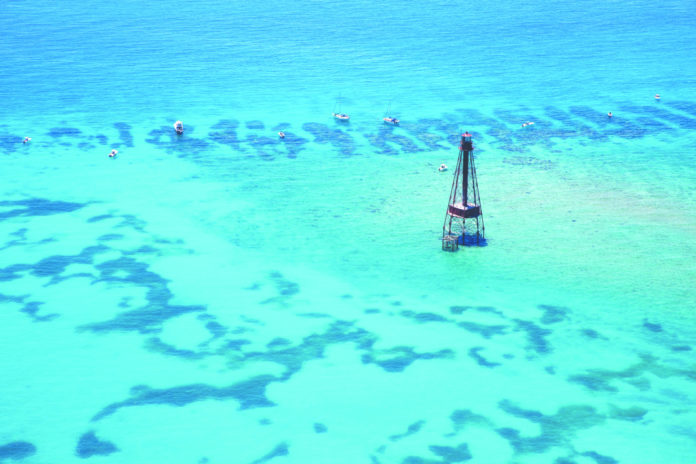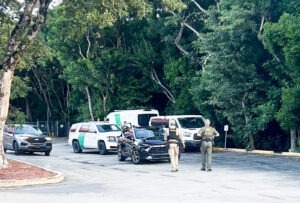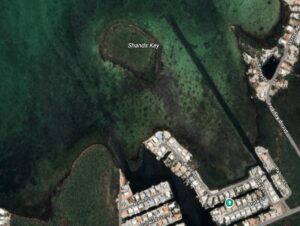It’s no secret that real estate prices in the Keys are at an all-time high. Apparently, the same goes for lighthouses.
In bidding wars that quickly narrowed to contests between two bidders, auctions for the Sombrero Key Lighthouse, Carysfort Reef Lighthouse and American Shoal Lighthouse all ended within one week of one another. Though the Sombrero Key Lighthouse originally opened with the closest auction end date, the U.S. General Services Administration (GSA)’s auction rules allowed bidders to extend each auction for 24 hours with every subsequent bid past the auction’s original end date.
Carysfort Reef Light off Key Largo was the first to close, settling on a final price of $415,000 on May 16. Sombrero Key Light off Marathon followed a day later, closing at $575,000. Six days later, American Shoal Light off Sugarloaf Key capped a record auction week with a final price tag of $860,000. Per the terms of the U.S. General Services Administration, the identities of the winners and other bidders were not disclosed on the auction website. The winners will now have 45 days to complete the transactions.
All three lighthouses are cast iron octagonal screw pile towers with keepers’ quarters. Built in 1852, Carysfort is the oldest of the three, followed by Sombrero in 1858 and American Shoal in 1880. Though they were functional navigational beacons until as recently as 2015, the dawn of GPS and other navigation instruments, along with the structures’ ages, eventually rendered them redundant or unfit for duty.
According to officials, the new owners will face complicated and extremely costly paths ahead as they look to maintain, restore or repurpose their new properties.
For starters, all three structures will need serious work, to the tune of millions of dollars. Reports prepared by the U.S. Coast Guard in 2010 detailed rehabilitation costs north of $2 million “required in the near term” for each lighthouse, with additional “deferrable” costs of between $80,000 and $535,000.
Among the suggested immediate repairs: cleaning and coating metal struts, replacing broken and deteriorated tie rods, repairing holes and cracks in catwalks and walls, and replacing missing portholes and windows.
Given that the structures are now 12 years older and that costs for materials and labor have risen significantly, the repair costs will be much higher today.
Eric Martin is the president of the Florida Keys Reef Lights Foundation, an organization dedicated to saving and preserving six reef lighthouses in the state. Though he would love to see a full restoration of all the recently sold structures, he said he understands that owners face an uphill battle as they navigate the interplay of several agencies and the practicality of such significant work within protected areas of the Florida Keys National Marine Sanctuary (FKNMS).
And in his opinion, “even before 2015, (the lighthouses) weren’t getting proper maintenance.”
The National Historic Lighthouse Preservation Act of 2000 lays out a mechanism for the disposal of federally-owned historic light stations that no longer serve a need. Under the act, the properties may be transferred to federal agencies, state and local governments, nonprofits or educational agencies at no cost. The recipients are expected to maintain the historic structures and make them available to the public for education, park, recreation or historic preservation purposes. Such was the case for Islamorada’s Alligator Reef Light, given to the Islamorada-based nonprofit Friends of the Pool in September 2021.
However, said Martin, a private auction removes many of these safeguards for the historic structures.
“When you buy them at auction, you can do anything you want as far as opening them to the public,” he said. “You don’t even have to restore it, it’s just that if you do … you’re supposed to go through the state’s historic preservation office and go by the guidelines of the national parks.”
Further complicating matters are the regulations in place to protect the corals and ocean floor under and around each lighthouse, regulated by the FKNMS. Only the structures are conveyed in each auction, not the submerged land underneath, and two of the three – Carysfort and Sombrero – are located in specially-protected Sanctuary Preservation Areas (SPAs). Generally speaking, activities that alter or construct any material on the seabed or harm coral aren’t allowed, and SPAs have even stricter regulations.
Using boats to carry heavy equipment, materials and workers through the shallow waters around the lighthouse is already a tricky proposition, and delays due to poor weather can quickly rack up a hefty tab throughout the restoration process.
On the other hand, if the lighthouses are left untouched for long enough, pieces will eventually begin falling into the ocean, damaging legally protected sanctuary resources with unwanted pollution.
Joanne Delaney is the FKNMS resource protection and permit coordinator. She said it’s difficult to say what activities could be permitted at the lighthouses until owners approach her with very specific plans and goals in mind.
“We have a whole bunch of regulations in the sanctuary that are designed to meet specific resource protection goals,” said Delaney. “Not every regulation in the sanctuary would necessarily be applicable to activities that might occur at these reef lights, but some probably would.
“There’s a lot of conjecture about what might happen, but we can’t really say whether something could be permitted or not until someone actually proposes it.”
A discussion of the sales would be remiss without addressing the elephant in the room: could lighthouse AirBnBs become a new fad in the Florida Keys? Though the experts who spoke with Keys Weekly all refrained from offering a concrete “no,” the difficulty and cost of threading the needle through the requirements of so many agencies while completing expensive repairs may not be worth a few hundred dollars a night.
“Is it possible? Maybe. Is it going to be practical and implementable for your average person? I don’t know,” said Delaney. “You just have to think about the location. … This thing is in the middle of the ocean.”
Keys Weekly reached out to GSA to attempt to contact the lighthouses’ new owners and further clarify their obligations, but had not received a response as of press time.





















